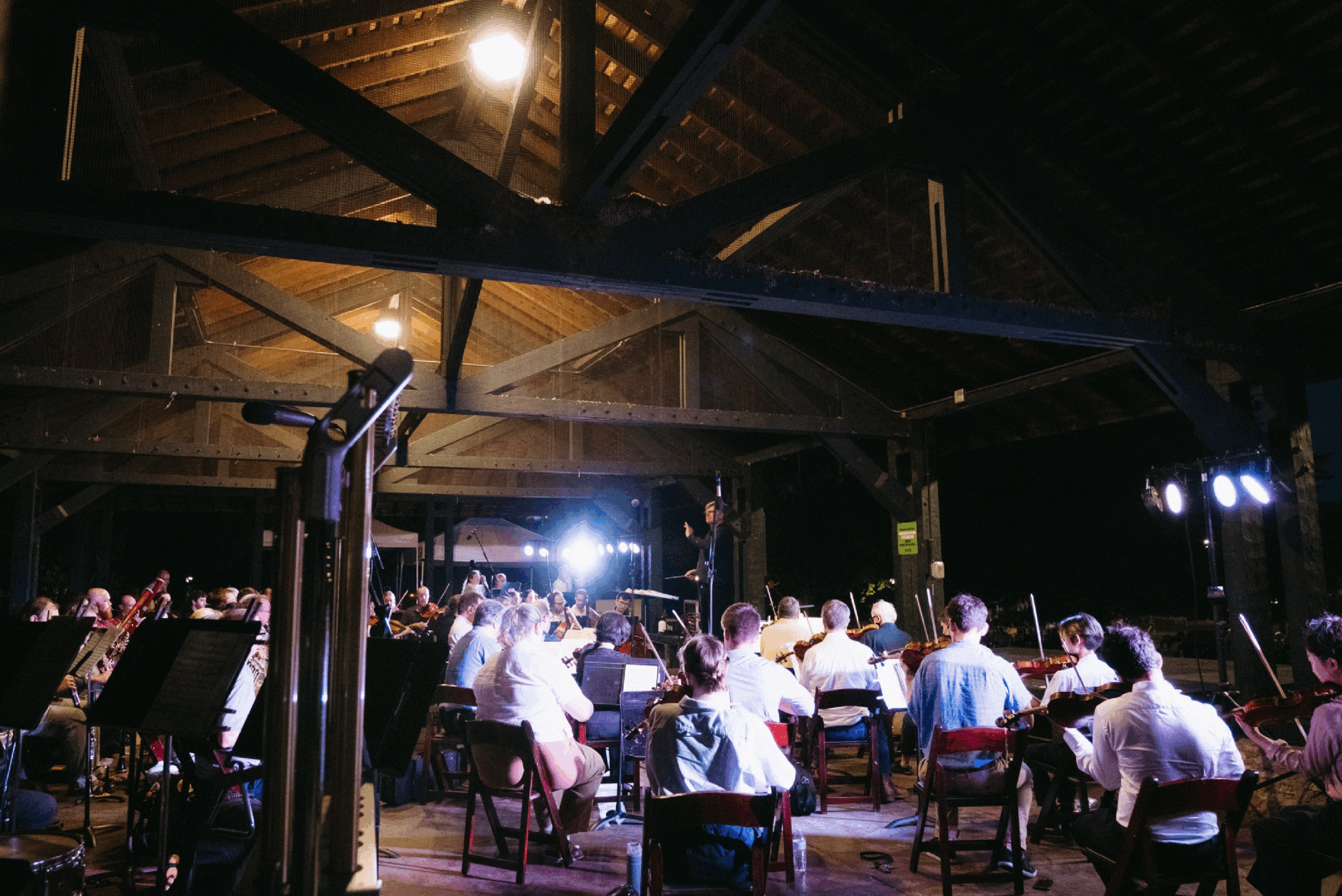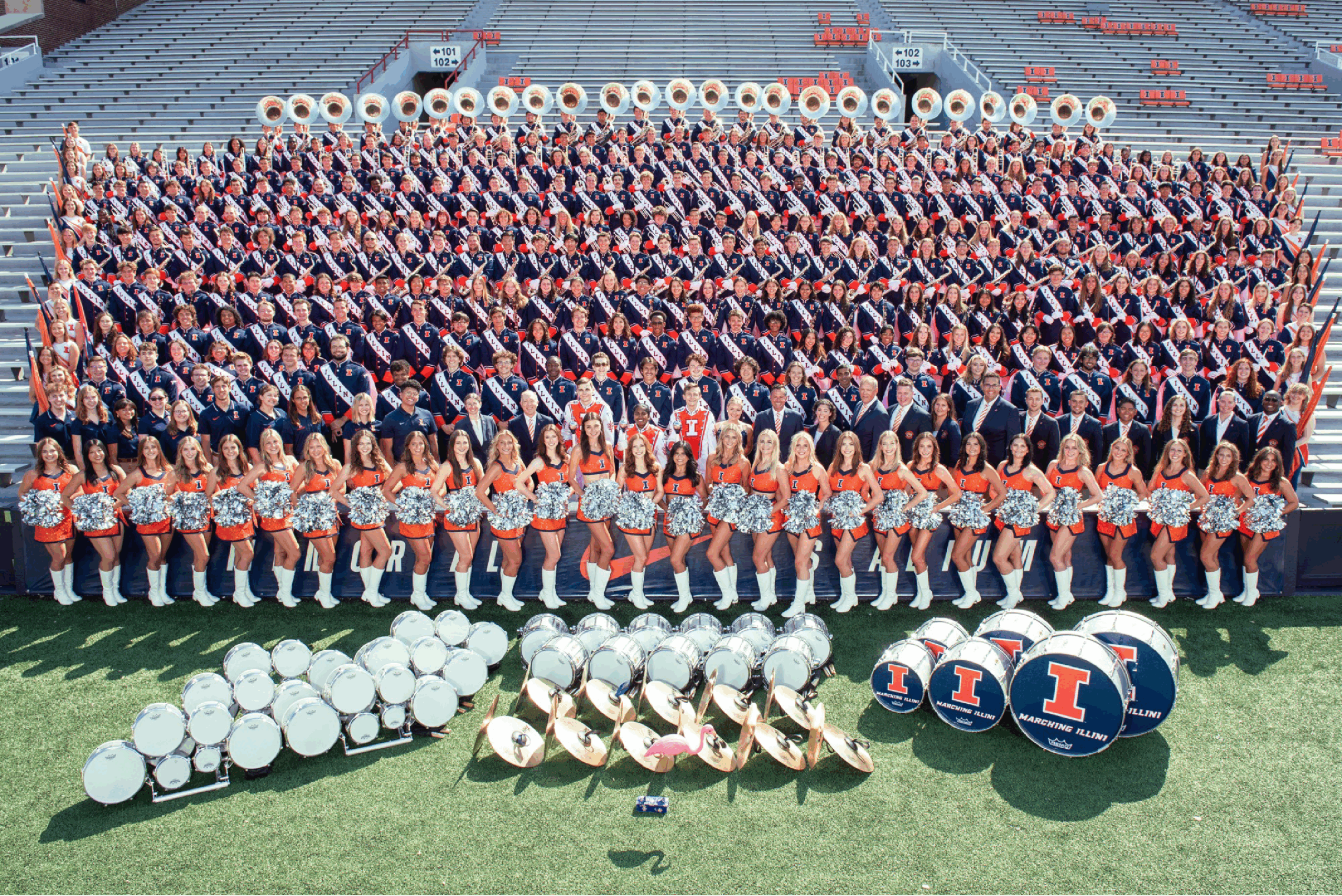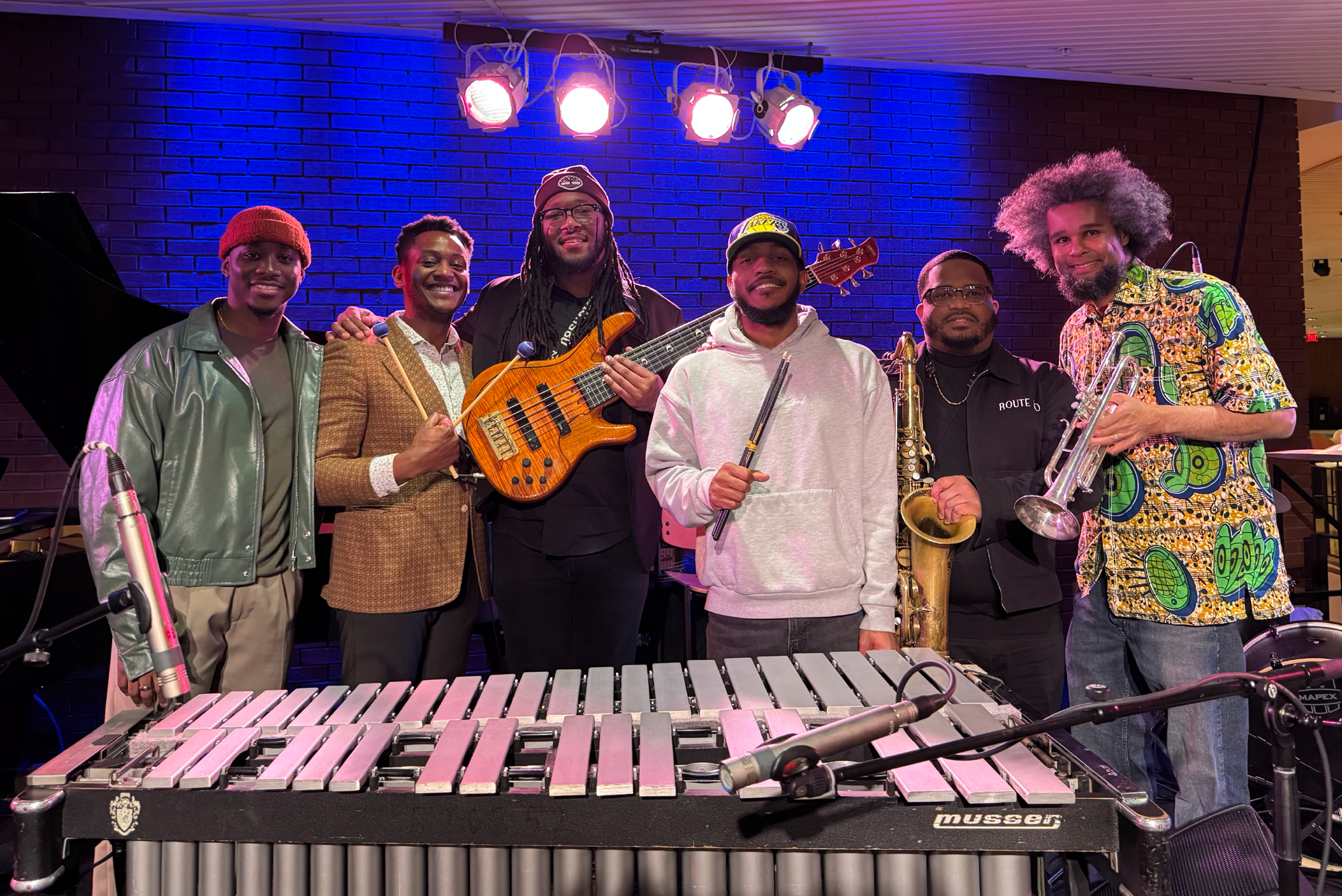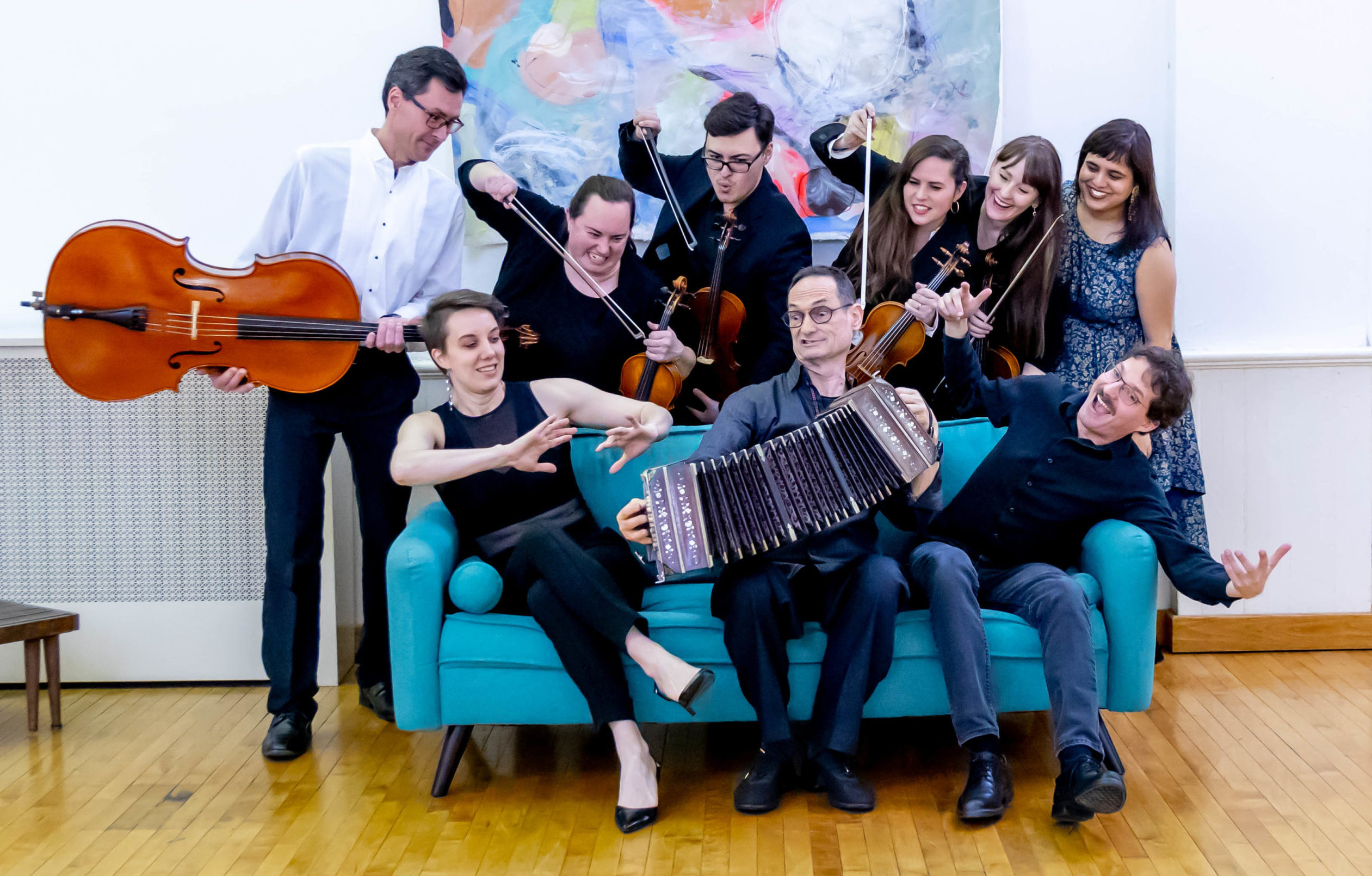LINEUP

To learn more about the orchestra, Maestro Hobson, the musicians, administration, and Advisory board visit Sinfonia’s website.

The Three-In-One is a tradition forged in the early years of the band’s history from three distinct pieces of the University’s heritage. The Marching “ILLINI” formation was created by A.A. Harding and his assistants in the early 1920’s, making it the oldest part of the Three-In-One. The marching drill for this formation originally consisted of a march down the field in a “Block I” formation, and a marching into the ILLINI formation once the band had marched back downfield. The present-day version of the Marching ILLINI is similar to the original, but is highlighted by an intricate countermarch that allows the band to form the ILLINI letter by letter as it marches back down the field.
The musical portion of the Three-In-One consists of three distinct Illinois pieces: “Pride of the Illini,” “March of the Illini,” and “Hail to the Orange.” “Pride of the Illini,” written by Karl King expressly for the Illinois Bands, was published in 1928. Harry Alford’s “March of the Illini” was also published in 1928, but was performed many years before its publication. The three pieces were eventually combined into a medley and given the title, “Three-In-One.” The “Three-In-One” drill and music are an important part of the University’s heritage.
The contemporary pregame show combines traditional Illinois songs with more recent drill elements. The opening sequence begins with acadence from the drumline as the band enters the field. The drum majors lead the drumline and sousaphones onto the field from the west sideline. The remainder of the band enters from the two end zones in a double-time quick step.
Once the lines are in place on the field, four whistles sound again as the percussion starts the last “quarter” of the run-on cadence. The band responds with one high chair style step while ‘crunching’ the torso as close to parallel to the ground as possible. During the next 16 counts, the ten lines expand into a block, covering the football field from sideline to sideline and 15 yard line to 15 yard line.
Horns come up as the block locks on the 17th count of the “secondary run-on,” and after 3 solo bass drum beats, the band explodes in the opening fanfare of “Revised Entrance No. 3,” an energetic arrangement of the Illinois State Song. Movement begins in the second fanfare as 4-member squads form out of the block. The squads move into dual U of I logos, and then transform into four arcs – two arcs facing each sideline. Sousaphones and percussion are centered between the arches, while the auxiliaries flank both sides of the band.
“Patriotic Medley” follows, and the winds adjust to an outline of the United States, while the percussion form the state of Illinois with one cymbal player strategically placed in Champaign. At the climatic point of “God Bless America,” a dramatic high chair 4-count turn to the home stands accompanies a downward cascade in the music, and the crowd invariably applauds. After a short mark-time, the formation changes to a large rectangle. During “Battle Hymn of the Republic,” the rectangle compresses in turn to a circle, pentagon, and finally a STAR, where the band halts and finishes the medley with the closing phrases of “God Bless America.”
“The Star Spangled Banner” is played from the star formation and is followed by a turn to the visitor seating in the southwest corner of the stadium. The visitors are welcomed with the playing of the visitors’ school fight song. During the last 32 counts of the fight song, the band converts from the star to the signature pregame “ILLINI.” Thatcher Howland Guild’s “Illinois Loyalty” is performed by a stationary band facing both sides of the stadium. The school song is followed by a turn to the north end zone and the playing of the chorus of “Oskee Wow-Wow.” The “ILLINI” form floats north downfield, and is immediately followed by “William Tell.” The “ILLINI” then collapses into a tunnel for the football team in the northeast corner of the football field. At this point, the band is brought to parade rest and half of the band is dismissed to their seats in the north stands. The remaining portion of the band plays “Oskee Wow-Wow as the team enters the field through the tunnel.
Illinois Loyalty is the school song of the University of Illinois. First performed on March 3, 1906, ‘Illinois Loyalty’ is one of the oldest songs of its kind in the United States. The song was written by Thatcher Guild specifically for the Marching Illini.
Due to the song’s length (over a minute long), it is normally played during pre-game and at the end of a game. Oskee Wow-Wow was written five years later as the school’s fight song.
Other prominent composers who wrote marches for the University of Illinois include John Philip Sousa (“University of Illinois March”), Edwin Franko Goldman (“March Illinois”) and Karl L. King (“Pride of the Illini”).

Dr. Reginald Lewis: Tenor Saxophone
Pete Shungu: Trumpet, rhymes/rap
Dr. Leon Lewis-Nicol: Piano
Jameel Stephens: Drums
Troy Roberts: Bass

Bandoneon Massacre is a tango orquesta based in Champaign-Urbana, IL. The ensemble was founded in 2011 by tango dancer, dance instructor, and bandoneonist Joe Grohens as part of a group of tango dance enthusiasts who wanted to dive deep into the world of tango music and learn how to play it.
While its members have varied, the love for tango has been consistent. Over 40 professional and amateur musicians have been a part of the group, including members of the Champaign-Urbana tango dance community, local musicians, and university students.
The group has primarily studied tango dance music from the 1930s, 1940s, and 1950s alongside selections from contemporary tango music composers and arrangers. Bandoneon Massacre has performed in a wide variety of events and venues, bringing the joy and passion of tango music for dancing and for listening to milongas (tango social dances), schools, community events, bars and breweries, and more.